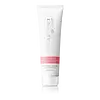Philip Kingsley Bond Builder Restructuring Pre-Shampoo Treatment Versus The INKEY List PCA Bond Repair Hair Treatment
What's inside
What's inside
 Benefits
Benefits

 Concerns
Concerns

 Ingredients Side-by-side
Ingredients Side-by-side

Water
Skin ConditioningButylene Glycol
HumectantEthylhexyl Palmitate
EmollientCetearyl Alcohol
EmollientGlyceryl Stearate Se
EmulsifyingPanthenol
Skin ConditioningPhenoxyethanol
Preservative4-PCA Dimethicone
Skin ConditioningHydroxyethyl Acrylate/Sodium Acryloyldimethyl Taurate Copolymer
Emulsion StabilisingHydroxypropyl Guar Hydroxypropyltrimonium Chloride
Benzyl Alcohol
PerfumingSqualane
EmollientParfum
MaskingSodium Stearoyl Glutamate
CleansingAminomethyl Propanol
BufferingLimonene
PerfumingDisodium EDTA
Disodium PEG-12 Dimethicone Sulfosuccinate
CleansingPolysorbate 60
EmulsifyingCitric Acid
BufferingDehydroacetic Acid
PreservativeSorbitan Isostearate
EmulsifyingLinalool
PerfumingCitronellol
PerfumingCitral
PerfumingWater, Butylene Glycol, Ethylhexyl Palmitate, Cetearyl Alcohol, Glyceryl Stearate Se, Panthenol, Phenoxyethanol, 4-PCA Dimethicone, Hydroxyethyl Acrylate/Sodium Acryloyldimethyl Taurate Copolymer, Hydroxypropyl Guar Hydroxypropyltrimonium Chloride, Benzyl Alcohol, Squalane, Parfum, Sodium Stearoyl Glutamate, Aminomethyl Propanol, Limonene, Disodium EDTA, Disodium PEG-12 Dimethicone Sulfosuccinate, Polysorbate 60, Citric Acid, Dehydroacetic Acid, Sorbitan Isostearate, Linalool, Citronellol, Citral
Water
Skin ConditioningAmodimethicone
Butylene Glycol
HumectantBetaine
HumectantBis-PCA Dimethicone
Sorbitan Laurate
EmulsifyingCetrimonium Chloride
AntimicrobialPanthenol
Skin ConditioningTrideceth-12
EmulsifyingGlycerin
HumectantPEG-40 Hydrogenated Castor Oil
EmulsifyingSodium Benzoate
MaskingHydrolyzed Pea Protein Pg-Propyl Silanetriol
Skin ConditioningAminomethyl Propanol
BufferingAloe Barbadensis Leaf Juice Powder
Skin ConditioningDisodium PEG-12 Dimethicone Sulfosuccinate
CleansingPotassium Sorbate
PreservativeCitric Acid
BufferingPolyglyceryl-4 Laurate
EmulsifyingAlcohol
AntimicrobialHelianthus Annuus Seed Extract
Skin ConditioningDilauryl Citrate
EmollientPhenoxyethanol
PreservativeAvena Strigosa Seed Extract
Skin ConditioningLecithin
EmollientWater, Amodimethicone, Butylene Glycol, Betaine, Bis-PCA Dimethicone, Sorbitan Laurate, Cetrimonium Chloride, Panthenol, Trideceth-12, Glycerin, PEG-40 Hydrogenated Castor Oil, Sodium Benzoate, Hydrolyzed Pea Protein Pg-Propyl Silanetriol, Aminomethyl Propanol, Aloe Barbadensis Leaf Juice Powder, Disodium PEG-12 Dimethicone Sulfosuccinate, Potassium Sorbate, Citric Acid, Polyglyceryl-4 Laurate, Alcohol, Helianthus Annuus Seed Extract, Dilauryl Citrate, Phenoxyethanol, Avena Strigosa Seed Extract, Lecithin
Ingredients Explained
These ingredients are found in both products.
Ingredients higher up in an ingredient list are typically present in a larger amount.
Aminomethyl Propanol is used to adjust the pH of products. It is also used as a base to create other organic compounds. Having a balanced pH is important for protecting your skin.
Aminomethyl propanol is safe to use in cosmetics up to 1%. It is soluble in water.
Butylene Glycol (or BG) is used within cosmetic products for a few different reasons:
Overall, Butylene Glycol is a safe and well-rounded ingredient that works well with other ingredients.
Though this ingredient works well with most skin types, some people with sensitive skin may experience a reaction such as allergic rashes, closed comedones, or itchiness.
Learn more about Butylene GlycolCitric Acid is an alpha hydroxy acid (AHA) naturally found in citrus fruits like oranges, lemons, and limes.
Like other AHAs, citric acid can exfoliate skin by breaking down the bonds that hold dead skin cells together. This helps reveal smoother and brighter skin underneath.
However, this exfoliating effect only happens at high concentrations (20%) which can be hard to find in cosmetic products.
Due to this, citric acid is usually included in small amounts as a pH adjuster. This helps keep products slightly more acidic and compatible with skin's natural pH.
In skincare formulas, citric acid can:
While it can provide some skin benefits, research shows lactic acid and glycolic acid are generally more effective and less irritating exfoliants.
Most citric acid used in skincare today is made by fermenting sugars (usually from molasses). This synthetic version is identical to the natural citrus form but easier to stabilize and use in formulations.
Read more about some other popular AHA's here:
Learn more about Citric AcidDisodium PEG-12 Dimethicone Sulfosuccinate is a type of silicone.
Panthenol is a common ingredient that helps hydrate and soothe the skin. It is found naturally in our skin and hair.
There are two forms of panthenol: D and L.
D-panthenol is also known as dexpanthenol. Most cosmetics use dexpanthenol or a mixture of D and L-panthenol.
Panthenol is famous due to its ability to go deeper into the skin's layers. Using this ingredient has numerous pros (and no cons):
Like hyaluronic acid, panthenol is a humectant. Humectants are able to bind and hold large amounts of water to keep skin hydrated.
This ingredient works well for wound healing. It works by increasing tissue in the wound and helps close open wounds.
Once oxidized, panthenol converts to pantothenic acid. Panthothenic acid is found in all living cells.
This ingredient is also referred to as pro-vitamin B5.
Learn more about PanthenolPhenoxyethanol is a preservative that has germicide, antimicrobial, and aromatic properties. Studies show that phenoxyethanol can prevent microbial growth. By itself, it has a scent that is similar to that of a rose.
It's often used in formulations along with Caprylyl Glycol to preserve the shelf life of products.
Water. It's the most common cosmetic ingredient of all. You'll usually see it at the top of ingredient lists, meaning that it makes up the largest part of the product.
So why is it so popular? Water most often acts as a solvent - this means that it helps dissolve other ingredients into the formulation.
You'll also recognize water as that liquid we all need to stay alive. If you see this, drink a glass of water. Stay hydrated!
Learn more about Water